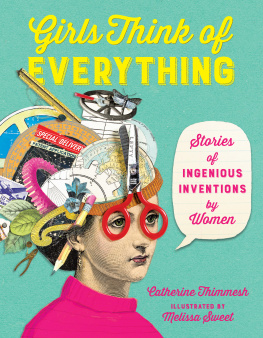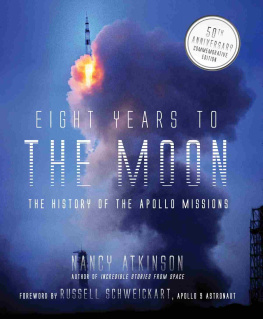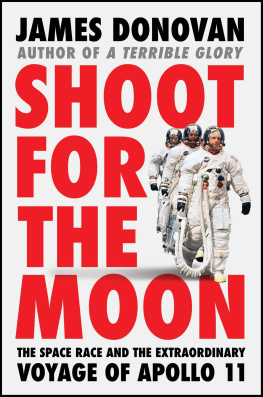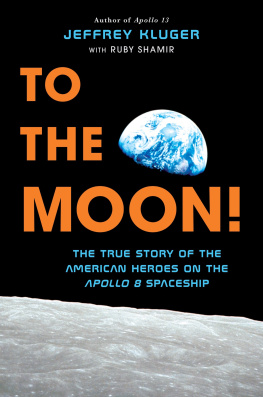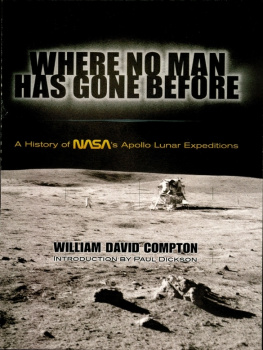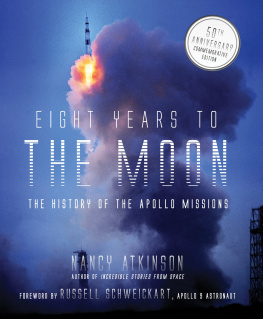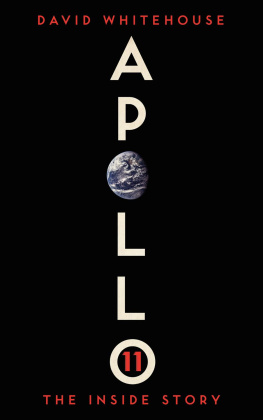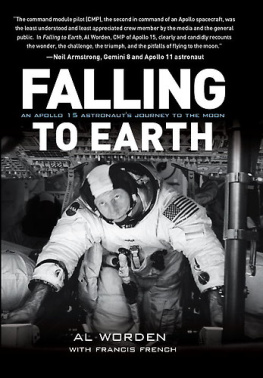Copyright 2006 by Catherine Thimmesh
All rights reserved. For information about permission to reproduce selections from this book, write to or to Permissions, Houghton Mifflin Harcourt Publishing Company, 3 Park Avenue, 19th Floor, New York, New York 10016.
www.hmhco.com
The Library of Congress has cataloged the print edition as follows:
Thimmesh, Catherine.
Team Moon/by Catherine Thimmesh.
p. cm.
1. Project Apollo (U.S.)Juvenile literature. 2. Apollo 11 (Spacecraft)Juvenile literature. 3. Space flight to the moonJuvenile literature. I. Title: Team Moon. II. Title.
TL789.8.U6A582546 2006
629.45'4dc22
2005010755
ISBN: 978-0-618-50757-3 hardcover
ISBN: 978-0-544-58239-2 paperback
eISBN 978-0-547-34969-5
v1.0915
For the kids of all those thousands and thousands of people who worked on Apollo. For the sacrifices you madethe birthday parties, ballgames, and bedtime stories that your parents had to miss because the moon was calling, and demanding their time. It must have been hard sometimes. But look at what they did! Thanks for sharing them with the world when we needed them most.
And for TeamMoonall four hundred thousand of youscattered around the United States, the globe; some, sadly, passed on. At age two and a half, I missed the main event. But hardly an evening goes by that I dont find myself momentarily transfixed by that glowing sphere in the sky. Im arrested and awestruck at first by its sheer beauty; and then, by an awarenesstrying to suppress both smile and tearsMy God, they actually did it! All I can say is thank you.
To the memory of Max Faget, NASA chief engineer and space guru, who would not allow his ailing health to disrupt his generosity of spirit and agreed to speak with me during my research to share his enormous knowledge of Apollo in hopes of inspiring the kids of today.
Beyond Imagination
It was mind-boggling. The television itself had been a flat-out miracle when it began to dominate the scene a mere twenty years previous. And now, that technological wonder of wonders was going to trump itself. Because very soon, if all went according to plan, it would transmit pictures of an actual man, on the actual moon. In 1969, on July 20 (in one part of the world) and July 21 (in the other part), half a billion people on the blue-marbled globe clicked on their TV setsflush with anticipationeager to watch as Apollo 11 would attempt to put man on the moon for the first time in all of history. The moon!
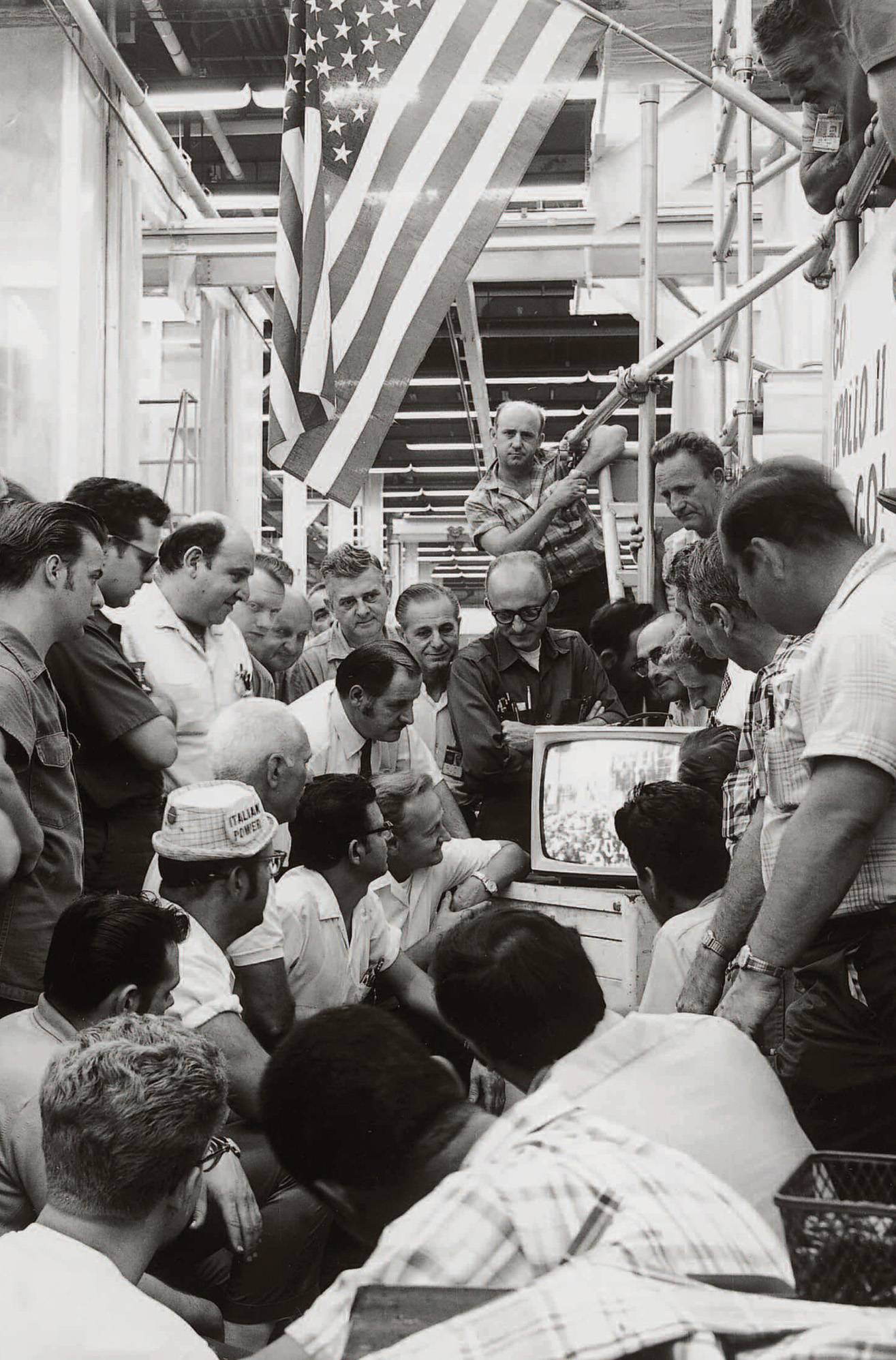
A crowd of workers from Grummanthe company that built the lunar modulesqueeze together in Plant 3 at Bethpage, New York, to witness the launch of Apollo 11. (photo courtesy Grumman History Center)
And now, at this defining moment, the world had come togetherlike nothing ever beforenot only to wish the astronauts Godspeed, but to bear personal witness to this incredible event. On that day, people gathered: in homes and schools and businesses; in restaurants and shops; and on sidewalks and streets and in parks. They were eager to be a part, however small, of something so out-of-this-world big. If there was a TV in the vicinity, it was on. And people sat. And watchedwide-eyed, waiting.
Fate has ordained that the men who went to the moon to explore in peace will stay on the moon to rest in peace.... These brave men, Neil Armstrong and [Buzz] Aldrin, know that there is no hope for their recovery. But they also know there is hope for mankind in their sacrifice.
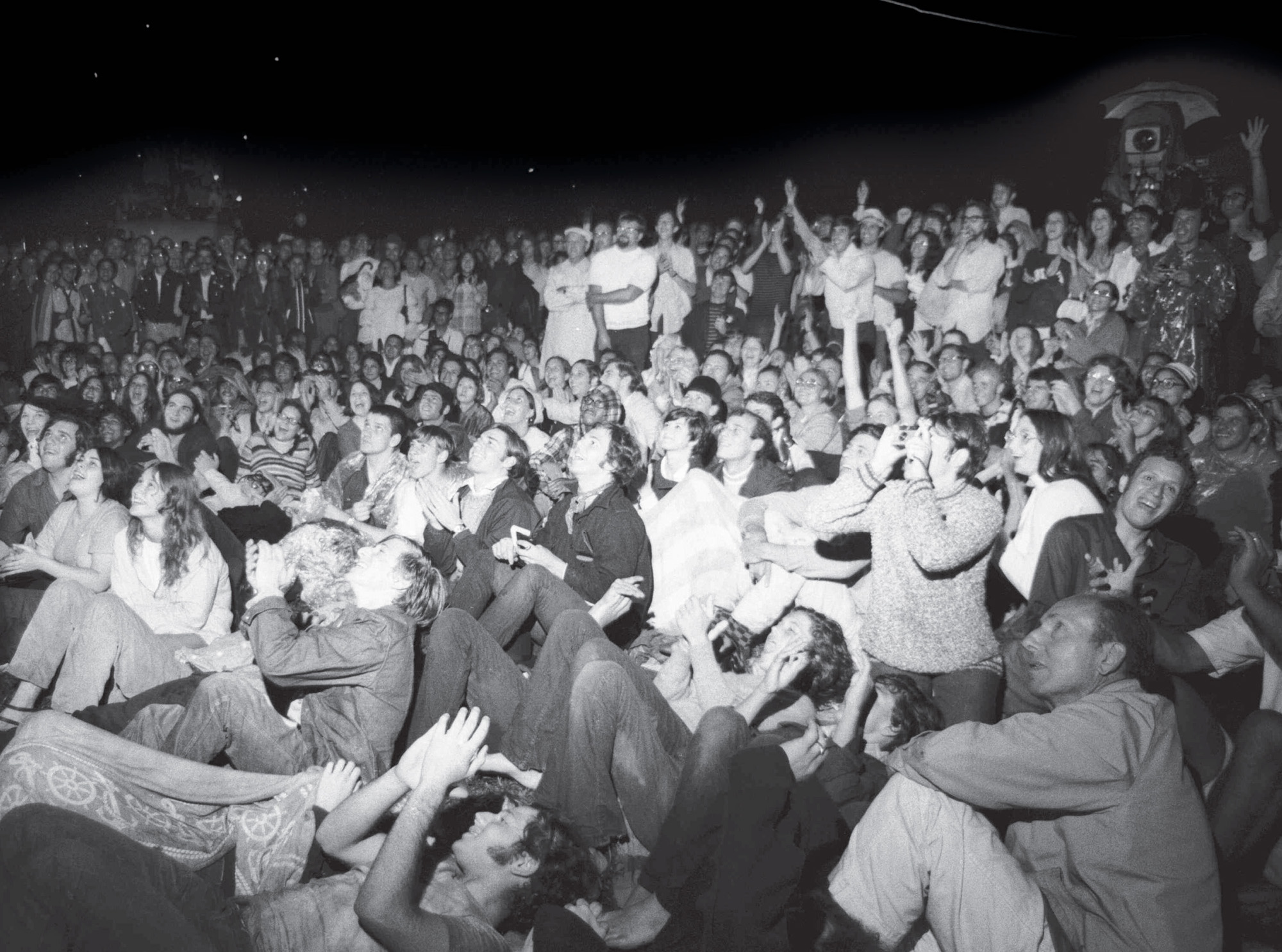
Despite rain, thousands of New Yorkers attend a moon-in at Central Parks Sheep Meadow, watching the live moon telecast projected on a big screen, enthusiastically waiting for Neil Armstrong to set foot on the moon. (photo courtesy of Corbis)
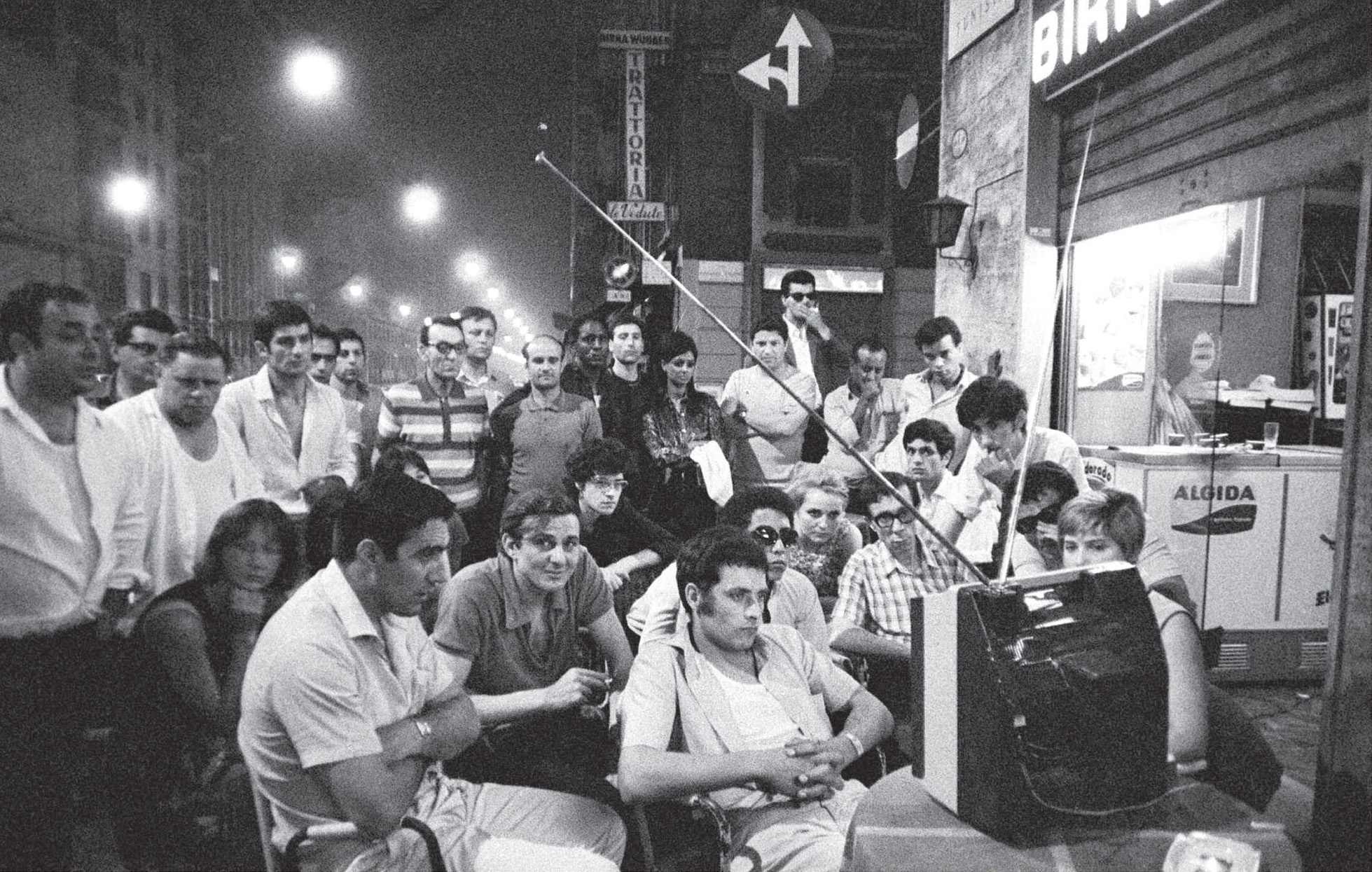
A small television at an outdoor sidewalk caf in Milan, Italy, draws a large crowd of spectators for the momentous landing. It didnt matter that Neil and Buzz were Americans. They were mankinds representatives, they were men from the planet Earth. [So said the plaque they would leave on the moon.] (photo courtesy AP/Wide World Photos)
Rest in peace? On the moon? Thankfully, no; those ominous words (penned in top secret for President Nixon) were never spoken. But while millions upon millions of people were spellbound and starry-eyed with moon mania (sitting, watching, waiting), those people behind the scenes fretted over more problems and concerns and plans for emergencies than the rest of the world could ever know. The Fate Has Ordained speech was to be delivered in the event that the worst possible scenario came to pass. The speechs very existence proved that, beneath all the excitement, those people running the show never for a moment lost sight of the all too real dangers they were choosing to run into head-on. And though millions of eyes were focused front and center on the astronauts and the spacecraft, much of the action would, in fact, be taking place on the sidelines.
When those millions of people tuned in hoping to witness the moonwalk, one thing they wouldnt see (or at best might just catch a glimpse of) were the nonastronauts, those beyond the glare of the limelight. The regular folks whose efforts made an impossible mission possible in the first place. All the people behind the scenes whose ideas and expertise, imagination and inventiveness, dedication and focus, labor and skill, combined in one great endeavoron the grandest of grand scalesand conspired to put man on the moon. Yes, three heroic men went to the moon; but it was a team of four hundred thousand people that put them there. They were the flight directors, controllers, planners, and engineers; the rocket designers and builders and technicians; the managers, supervisors, quality control and safety inspectors; the programmers, electricians, welders, seamstresses, gluers, painters, doctors, geologists, scientists, trainers, and navigators...
Apollo 11 is their story too.
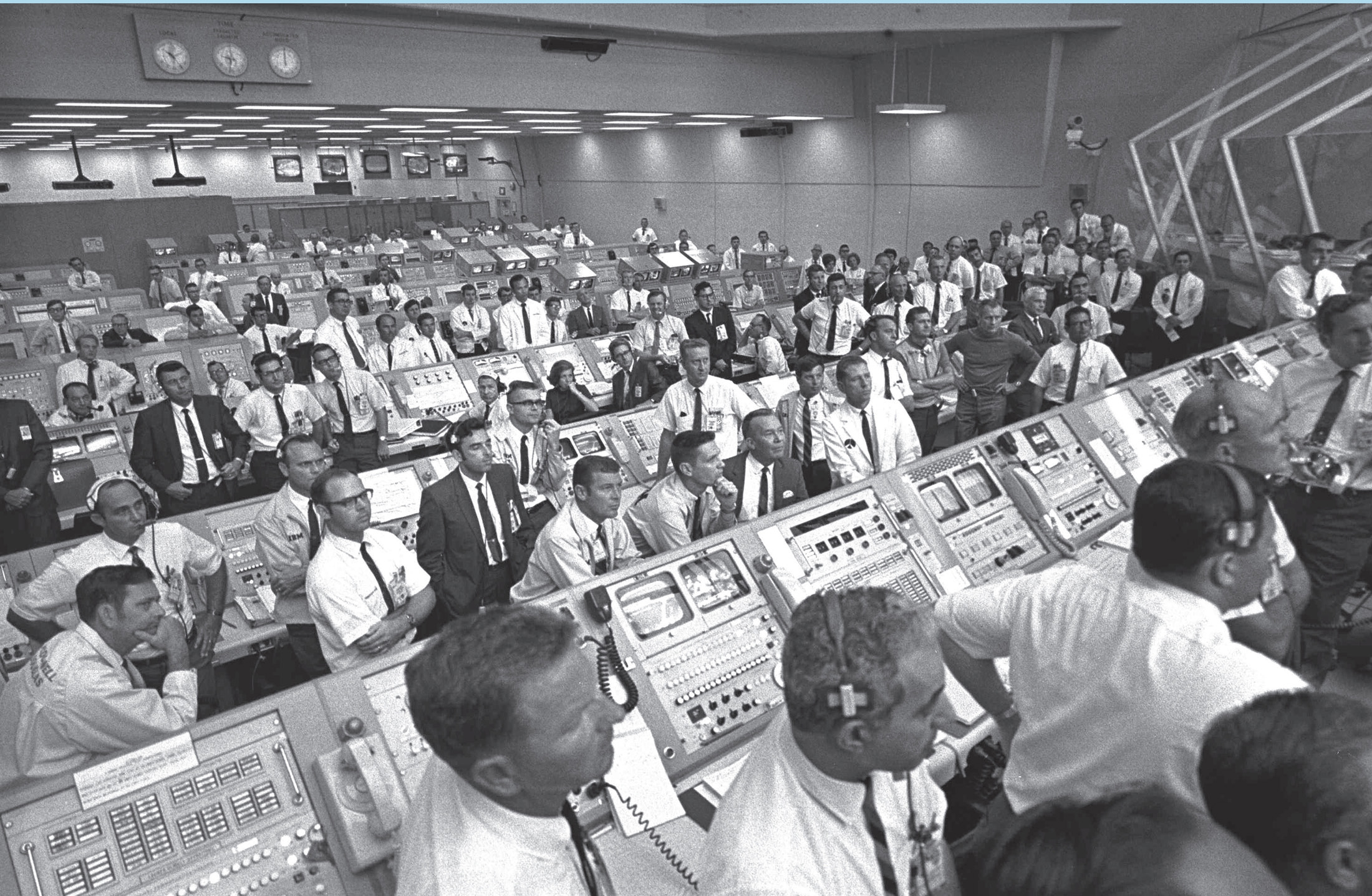
In the Firing Room, members of the launch team view the liftoff after Apollo 11 has cleared the tower and is on its way to the moon.
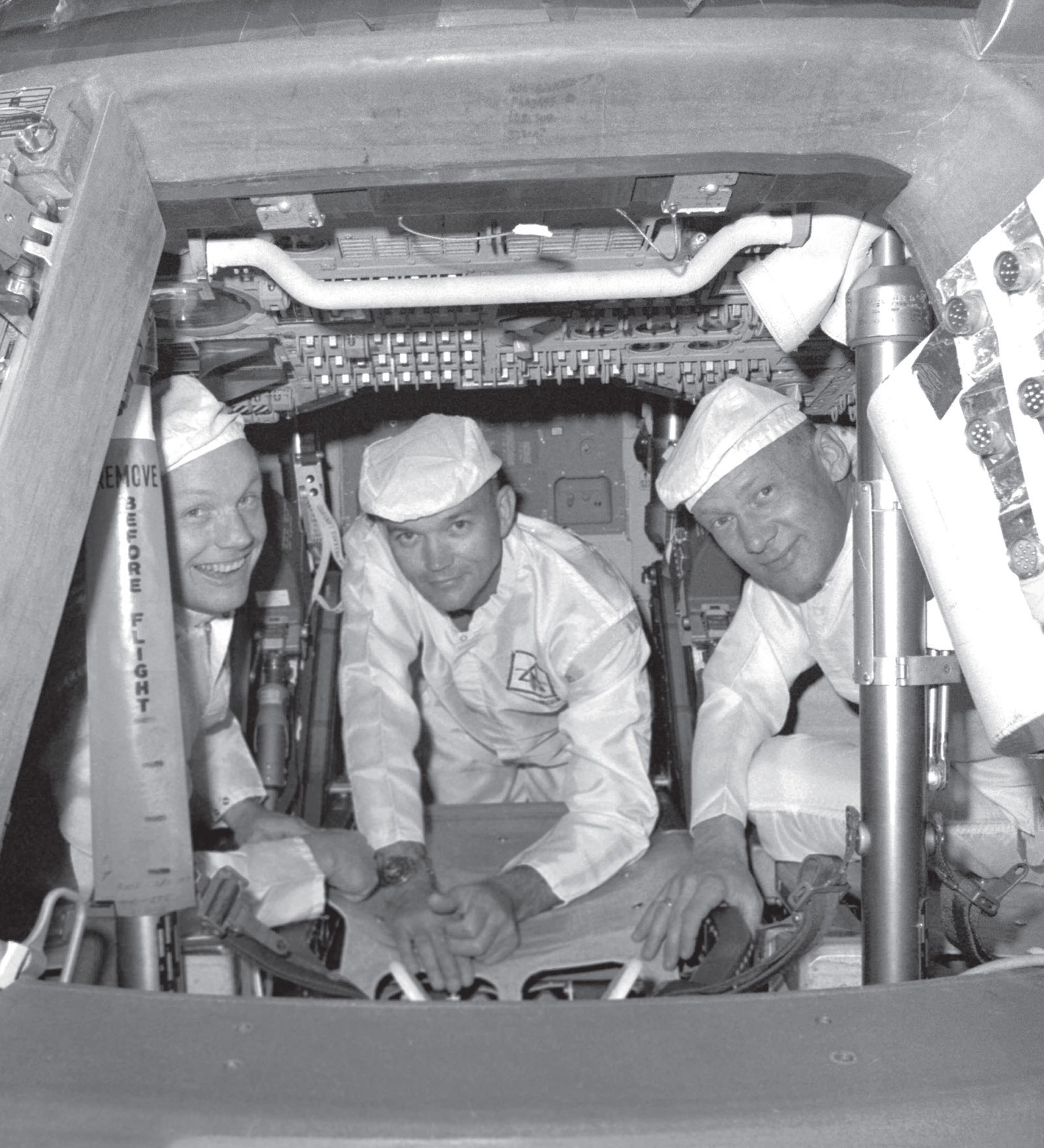
Astronauts Neil Armstrong, Michael Collins, and Buzz Aldrin in the hatchway of the command module during a testing session.
All this is possible only through the blood, sweat, and tears of a number of people.... All you see [are] the three of us, but beneath the surface are thousands and thousands of others.
Apollo 11 astronaut Michael Collins
I think one of the things we had was a common goal; and we all realized that we were into something that was one of the few things in history that was going to stand out over the years. Were going to go to the moon! Were putting a man on the moon!
And that so captured our imagination, and our emotion, that we didnt want to go home at night. We just wanted to keep going, and we couldnt wait to get up and get back at work in the morningbecause were going to the moon!


